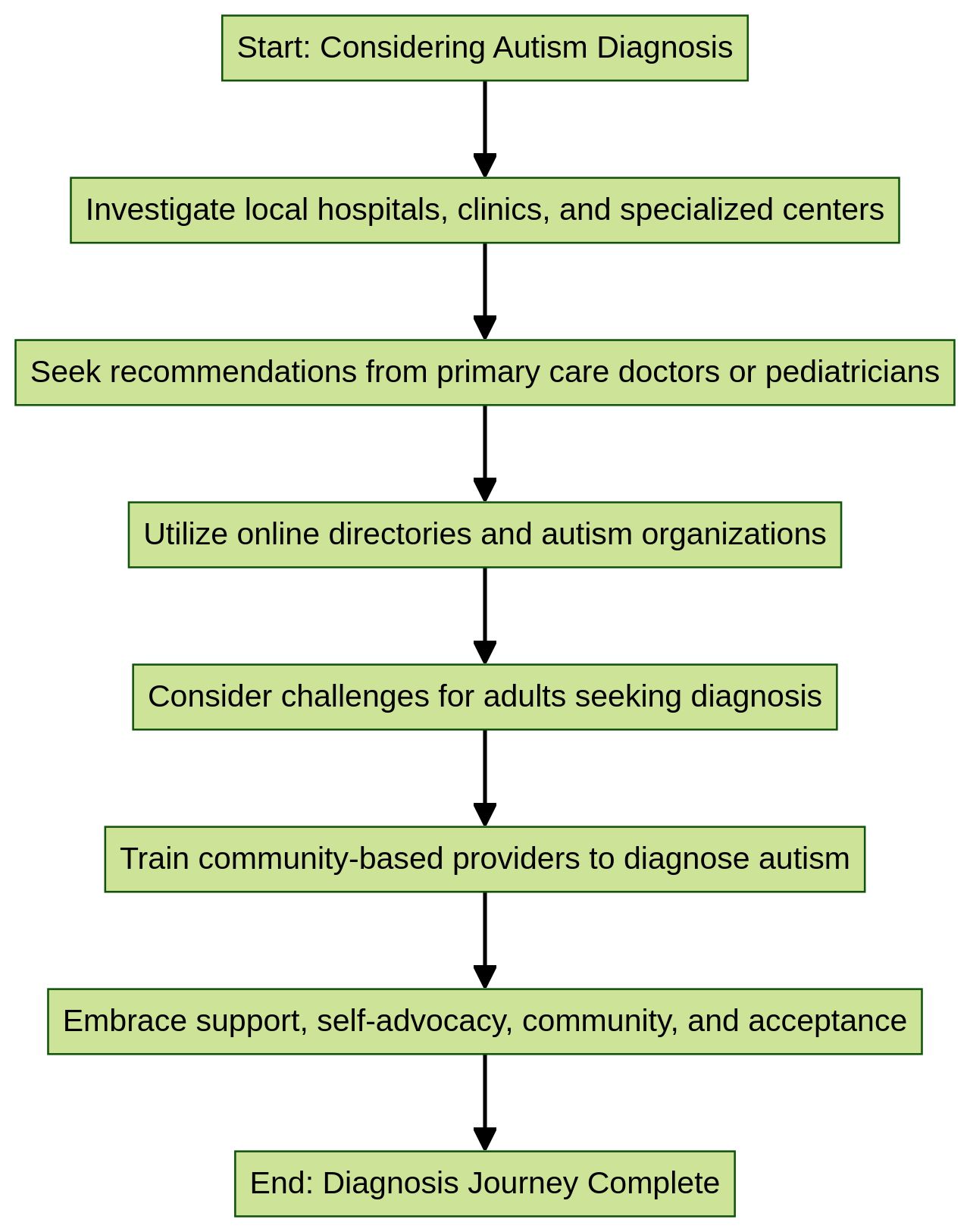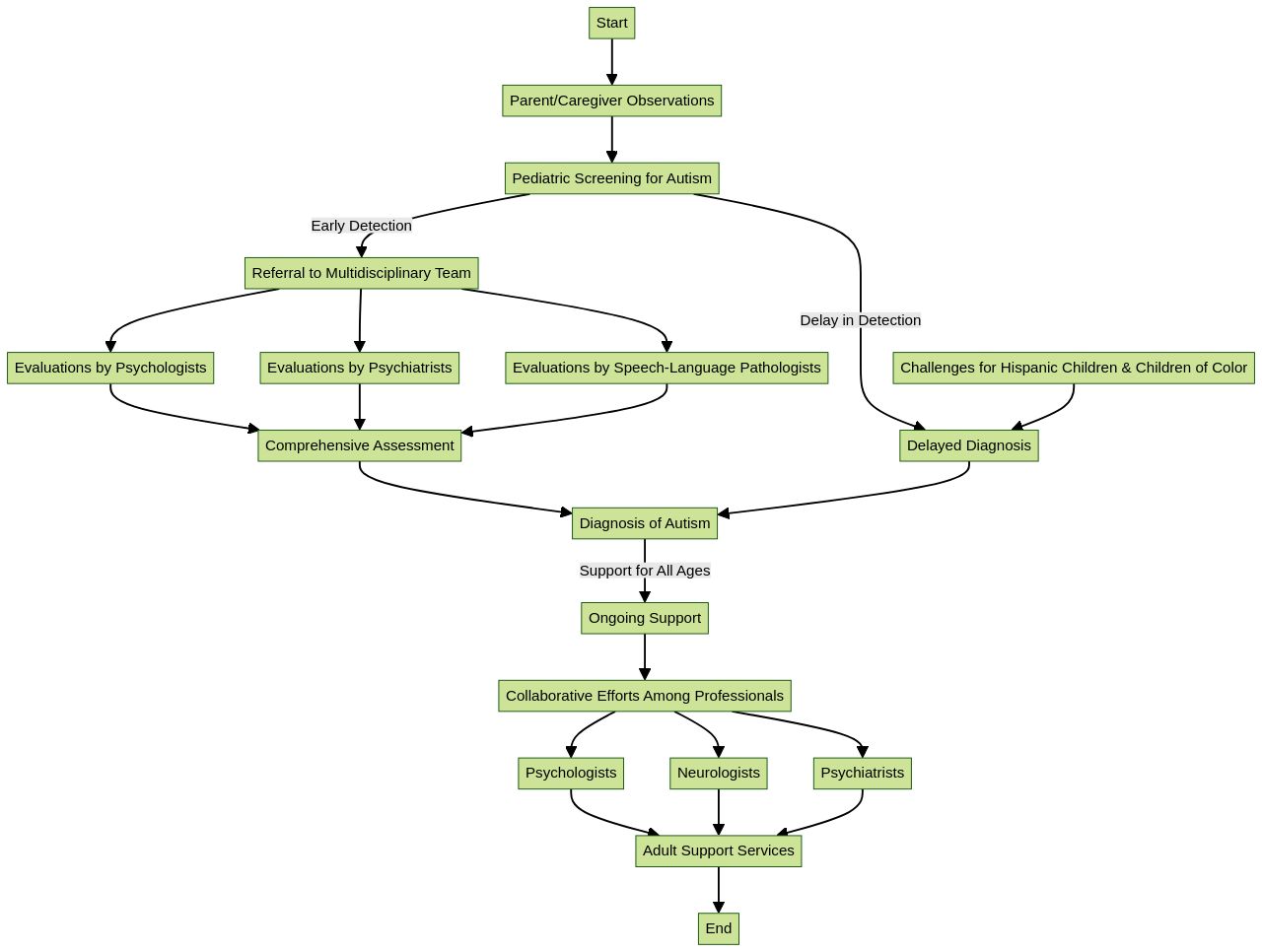Introduction
Autism, a neurodevelopmental condition, presents unique challenges and experiences to those it touches. Recent data reveals a significant underdiagnosis in adults, particularly among those over 50, with estimates suggesting that over 425,000 individuals in this age group in the UK may be living without a diagnosis.
The implications are profound, as early identification is crucial for accessing tailored support services. Current statistics indicate that the prevalence of autism has surged to 1 in every 36 people, a more than threefold increase since 2004. This rise is not uniform across demographics—boys are approximately 4 times more likely to be diagnosed than girls, and disparities in diagnosis rates between White and Black children and Hispanic children persist due to various barriers, including stigma and access to healthcare.
Understanding Autism Diagnosis
Autism, a neurodevelopmental condition, presents unique challenges and experiences to those it touches. Recent data reveals a significant underdiagnosis in adults, particularly among those over 50, with estimates suggesting that over 425,000 individuals in this age group in the UK may be living without a diagnosis.
The implications are profound, as early identification is crucial for accessing tailored support services. Current statistics indicate that the prevalence of autism has surged to 1 in every 36 people, a more than threefold increase since 2004.
This rise is not uniform across demographics—boys are approximately 4 times more likely to be diagnosed than girls, and disparities in diagnosis rates between White and Black children and Hispanic children persist due to various barriers, including stigma and access to healthcare. The process for diagnosing autism in adults involves a thorough evaluation of developmental history and current behavior, often including self-report questionnaires.
However, finding specialists who can assess adults can be challenging, and these services are frequently costly and not covered by insurance. To alleviate some of these barriers, telehealth has emerged as a valuable tool, especially for those unable to travel to specialists.
Additionally, the language surrounding autism is evolving to be more inclusive and reflective of the autistic community's priorities, recognizing the importance of caregiver involvement in the diagnostic and support process. Support groups and resources for both autistic adults and their caregivers are increasingly available. These groups provide a platform for shared experiences, information exchange, and community building. Recent initiatives have aimed to streamline the diagnostic pathway, with NHS England issuing guidelines to ensure timely assessments and support. Notably, studies have shown that when community-based providers are adequately trained, their diagnostic concordance with autism specialists is remarkably high, which could significantly reduce the wait times for a diagnosis and subsequent interventions.
Recognizing the Signs of Autism
Understanding the multifaceted nature of autism is crucial when considering an assessment for oneself or a loved one. Autism manifests through various behaviors and difficulties, such as social interaction challenges, communication hurdles, repetitive actions, and heightened sensitivity to sensory stimuli. Brain scans reveal distinct differences in brain structure between individuals with autism and those with typical neurological development, debunking myths that autism is caused by vaccines, parenting styles, or nutrition.
It's vital to recognize that autism's presentation can change with age and life events, and co-occurring conditions like anxiety or ADHD can influence its expression. Recent statistics have shed light on the critical importance of early diagnosis. According to the CDC's 2023 research, 1 in 36 children is diagnosed with autism, a notable increase from just two years prior.
Early identification, by age 4, can be fifty times more likely to connect children with essential services. However, disparities persist; children of color may still face delayed diagnoses due to barriers such as stigma, healthcare access, and language differences. Moreover, boys are about four times more likely to be diagnosed with autism than girls, suggesting that girls may exhibit autism differently and thus remain underdiagnosed.
The journey to a formal diagnosis for adults can be arduous, with many clinicians lacking the expertise or willingness to assess adults. Yet, as awareness grows and diagnostic criteria evolve, more adults, particularly those over 50 who grew up when autism was less understood, are seeking and receiving diagnoses. This acknowledgment opens doors to tailored support and a better understanding of their unique experiences.
Finding Autism Diagnosis Services Near You
Navigating the journey to an adult autism diagnosis requires understanding the landscape of available services and professional expertise. As the prevalence of autism spectrum disorder (ASD) rises, with a CDC report indicating an increase to 1 in every 36 children, the necessity for accessible diagnostic services becomes ever more critical. To locate autism diagnosis services in your vicinity, a proactive approach is advisable.
Begin with a detailed investigation of local hospitals, clinics, and specialized centers that provide diagnostic evaluations for autism. Your primary care doctor or pediatrician can be a valuable ally, offering recommendations and referrals to trusted specialists. Furthermore, the internet is a rich resource, with online directories and national autism organizations providing insights on local services.
It's essential to consider the unique challenges faced by adults seeking a diagnosis, as highlighted by The Autism Community in Action (TACA), which emphasizes the importance of therapies that can enhance various skills and improve quality of life. Additionally, the recent innovation of training community-based providers to diagnose autism, as reported in Pediatrics, presents an optimistic future where the bottleneck in diagnosis may be reduced, enabling earlier access to crucial intervention services. Embracing this knowledge and utilizing these resources can empower individuals to pursue a diagnosis and the subsequent support they require.

Navigating the Diagnostic Process
Embarking on the journey toward an adult autism diagnosis can be a transformative experience, both for the individual and their loved ones. The path to diagnosis often involves a series of comprehensive evaluations by a multidisciplinary team, which may include psychologists, psychiatrists, and speech-language pathologists.
These professionals delve into the individual's developmental history and present-day challenges through assessments, interviews, and observations. It's essential for parents and caregivers to provide insights, as an early diagnosis can significantly improve access to early intervention services and support systems, enhancing the quality of life and bringing a sense of relief to the entire family.
The process, while thorough, is not without its hurdles. Research highlights a two-year average delay from initial screening to diagnosis, despite pediatric recommendations for early screening.
This gap is concerning, as early behavioral interventions are most effective and can profoundly impact outcomes. With the prevalence of autism rising to 1 in every 36 children, the need for timely and accurate diagnosis is more pressing than ever, particularly in light of the challenges faced by Hispanic children and children of color in accessing healthcare services. Understanding the nuances of autism and the importance of early detection is crucial for healthcare providers. With the right approach and collaborative efforts among psychologists, neurologists, and psychiatrists, adults can navigate this journey with confidence, knowing that the necessary supports will follow a confirmed diagnosis.

Preparing for the Evaluation
To optimize the autism evaluation process for adults, a comprehensive preparation is crucial. Collecting a wide array of documents, such as medical records, educational reports, and any prior assessments, is vital to paint a complete picture of the individual's developmental history.
This is particularly important given that the Diagnostic and Statistical Manual of Mental Disorders, Fifth Edition (DSM-5), emphasizes the necessity for core autism features to have been present from early childhood, though they may become more apparent as social demands increase. Moreover, understanding the condition's genetic likelihood can inform the evaluation, as autism is not caused by external factors such as vaccines or parenting styles, but rather by differences in brain structure and function.
Preparing a list of specific questions and concerns about the diagnostic process is also beneficial, as this can address the common dissatisfaction reported by families regarding unclear information and miscommunication with professionals. As recent research underscores the importance of early intervention, it is imperative to approach the evaluation with a thorough and informed perspective, ensuring that all relevant aspects of the individual's condition are considered. This preparation enables the pursuit of appropriate interventions that can significantly improve quality of life and mental health for those on the autism spectrum.
Conclusion
In conclusion, autism diagnosis poses unique challenges and experiences. Recent data reveals an underdiagnosis in adults, particularly those over 50.
Early identification is crucial for accessing tailored support services, as the prevalence of autism has surged to 1 in every 36 people. Disparities in diagnosis rates persist due to stigma and limited healthcare access.
Telehealth offers valuable solutions, especially for those who cannot travel to specialists. The evolving language surrounding autism reflects the autistic community's priorities and recognizes caregiver involvement.
Support groups and resources are increasingly available for autistic adults and their caregivers. Streamlining the diagnostic pathway ensures timely assessments and support.
Training community-based providers reduces wait times for a diagnosis. Recognizing the signs of autism is vital, as it manifests through various behaviors.
Early diagnosis connects children with essential services by age 4. Disparities remain, with children of color facing delayed diagnoses due to stigma and access barriers.
Finding autism diagnosis services requires proactive research of local hospitals, clinics, and specialized centers. Primary care doctors can provide recommendations and referrals. Online directories and national organizations offer insights on local services. The journey toward an adult autism diagnosis involves comprehensive evaluations by a multidisciplinary team. Parents' insights improve access to early intervention services. Optimizing the evaluation process involves collecting relevant documents, understanding genetic likelihoods, and preparing questions. By empowering individuals with knowledge and support, we ensure better outcomes for those on the autism spectrum.




